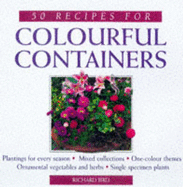The Dirt
on Potting Soil
Now that
the planting season has arrived, many of us will be starting patio pots,
filling hanging baskets or starting seeds indoors. The first acquisition will
be some potting soil.
All
potting mixes are not created equal, however. Some produce strong, well-rooted
plants while others seem to encourage plants to languish. What goes into
creating a great potting mix, and where can a gardener find a soil blend that
meets his or her needs?
Most
potting mixes begin with two main ingredients: peat moss for body,
and either perlite or vermiculite for drainage.†
Peat moss is a natural ingredient that is derived from partially
decomposed plant material harvested from peat bogs. It retains water well, but
is lightweight enough to stay friable, allowing tender roots to grow easily and
thrive.† The use of peat stirs
controversy, as there is some question as to its sustainability.† For this reason, coir may be added to the
peat or may replace it entirely.† Coir is
composed of the ground fibers from the outside husk of coconuts, so it is
highly sustainable. It is also lightweight, resists compaction and retains
water.† Some studies have shown that
seeds planted in coir germinate more quickly than those planted in peat-based
mixes, and coir is also pH neutral whereas peat is acidic. Coir may also reduce
the incidences of soil-borne disease such as pythium
in greenhouse applications.† Both
coir-based and peat-based potting mixes retail for between $14.00 for a bag to
$45.00 for a 3.2 cubic foot bale. Compared to lower-end mixes, this may seem
extravagant but the results of using a good quality potting mix make the
purchase worth the additional cost.†
These mixes expand after hydration, and one 3.2 cubic foot bale of a
premium peat-based mix handily fills at least a half-dozen 12Ē patio pots.

Learn to create beautiful arrangements of potted plants. Container gardening is becoming more popular. No digging, great for older gardeners or those with mobility issues or anyone with limited space. Grow flowers, herbs, veggies, even trees!
Lower-end
potting mixes generally are composed of soil or compost mixed with shredded
bark.† The bark allows water to drain
while the soil provides substance for the plants.† However, these mixes
tend to compact and will solidify into a rock-hard mass if they are allowed to
dry out. Further, as the tree bark decays it robs the soil and plants of
nitrogen.† This will result in plants
that yellow or whose growth is stunted.††
Even with the addition of fertilizers to the potting mix, these blends
generally are not the best answer for patio pots and are definitely not
appropriate for seed starting.
One more
feature of many potting mixes lately has been the addition of mycorrhizae. Mycorrhizae are
probiotic fungi, and provide a symbiotic relationship with plantsí roots that
resembles that provided to the digestive system by beneficial bacteria that are
now added to yogurt and milk drinks. Mycorrhizae attach
to roots and act as a virtual root system, allowing for greater nutrient and
water uptake by the plants.† Plants are
able to access and use soil nutrients and more importantly, micronutrients,
that impact plant growth, disease resistance, flowering and fruit production.† Plants are also better able to withstand
water stresses; there will be fewer losses during drought periods or in the
case of evergreen plants, during harsh winter weather that desiccates needles
or leaves. †A small amount of mycorrhizae give plants a lot more bang for the buck, and
potting mixes containing these microscopic gems are an excellent choice for
seed starting as well as transplanted material from flats or pots.
There are
some special mixes on the market that accommodate the needs of plants such as
orchids, cactus and citrus or acid-loving plants.† These may contain materials such as sharp
sand (cactus mix), large pieces of tree bark (orchids)
or a soil acidifier such as Ironite.† These mixtures are difficult for the home
gardener to replicate, so itís a good idea to purchase specialty soils for
special planting situations.
Some of
the best quality peat-based potting mixes on the market include Premier, Berger
and Fafard brands. One coir-based blend is sold under
the name Wonder Soil. These mixes are available for sale at many garden stores,
nurseries, hardware stores or they can be ordered either through the local
agricultural co-op or online.
†